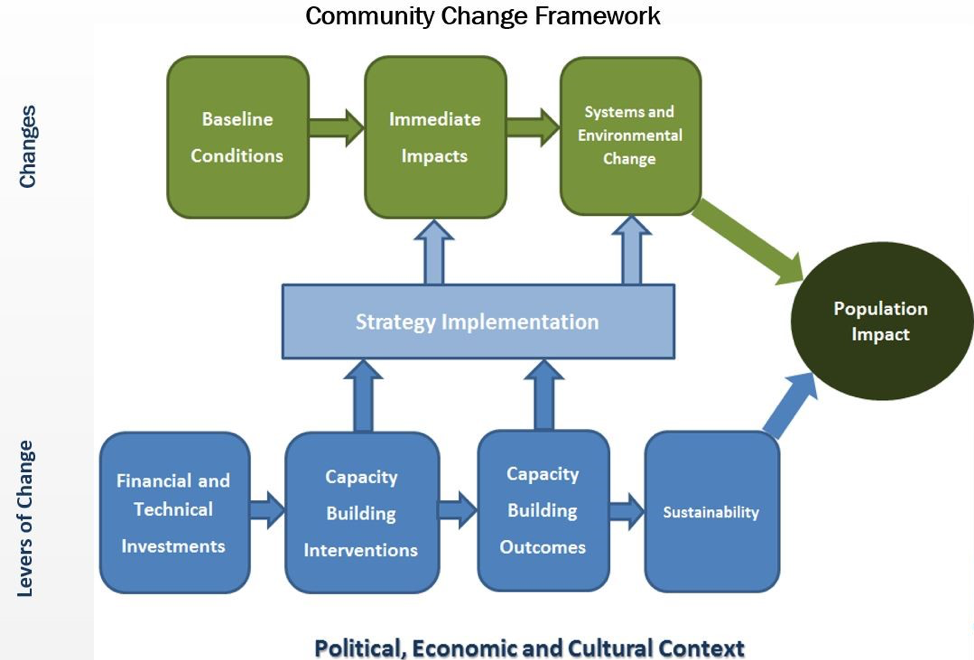
Greetings! I am David Chavis. My path as a student of community change started as a direct action community organizer, and included community development corporation directorships, strategist for organizing thousands of block associations in New York City, professor, evaluator, trainer, consultant, and CEO. I would like to share what I believe are among the most critical issues facing community development and other change initiatives and then present a Rad Resource to help with some of those challenges.
No justice, No results. Significant improvements in public health and well-being cannot be achieved without equity and fairness. My colleague, Kien Lee, challenges us to ask the critical question, how do our evaluations support increasing equity in communities?
Evaluation results will only be as good as what they evaluate. Powerful strategies are required to make large population level change. Unless an initiative significantly addresses social injustice, evaluators will not be able to find large population changes among disenfranchised groups or those otherwise discriminated against.
Power must be democratically and equitably shared throughout all aspects of the change process. If that change process is effective, then friction and conflict are highly likely. Evaluators’ and funders’ tendencies to be conflict adverse inhibits progressive social change. We have to prepare ourselves, as you well as help our clients, to learn how to embrace the conflict and contribute to equitable decision-making.
Public and private funders as well as other supporters of community change need to have a system for continuous strategy improvement. Community change is much like sailing; it requires instrumentation and the capacity to adapt to changing environmental situations in order to achieve population level goals. Evaluators can best support this by knowing how to measure change and by building the capacity to make continuous adjustments in the course of the initiative to get desired results.
A global system of collective and cumulative knowledge on community change needs to be in place. There appears to me to be very little building of a knowledge base on community change. As such, little knowledge is inherited from what others have learned. That is why we formed the Community Development TIG (please join). It would really help to have greater investment in community change R&D in order to increase the effectiveness of the field.
Measure what is important. It is essential to have a sound and well aligned theory of change and measurement plan that include community capacity, sustainability, scale and contexts. Whether through logic modeling or other techniques, the pathway to the intended outcomes needs to be mapped with appropriate measures along the expected process of systemic and population change leading to the intended results. Evaluators should help stakeholders focus on measuring and achieving systems changes and population level impacts at scale. These measures need to be used with appropriate methodologies and analyses.
My Rad Resource is “Evaluating Community Change: a Framework for Grantmakers“ based on the framework developed by Scott Herbert and I. This framework (see picture) recommends how to measure progress and results in place-based and community change initiatives. Embrace complexity!
The American Evaluation Association is celebrating Community Development TIG Week with our colleagues in the Community Development Topical Interest Group. The contributions all this week to aea365 come from our CD TIG members. Do you have questions, concerns, kudos, or content to extend this aea365 contribution? Please add them in the comments section for this post on the aea365 webpage so that we may enrich our community of practice. Would you like to submit an aea365 Tip? Please send a note of interest to aea365@eval.org. aea365 is sponsored by the American Evaluation Association and provides a Tip-a-Day by and for evaluators.


“Community change is much like sailing; it requires instrumentation and the capacity to adapt to changing environmental situations in order to achieve population level goals.”
Yes, and like sailing, one needs to change tack from time to time!